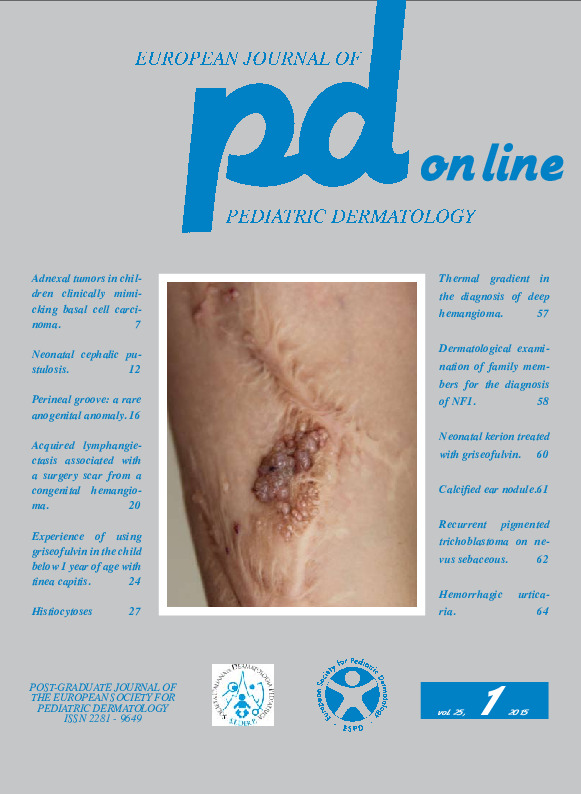Neonatal kerion treated with griseofulvin.
Downloads
DOI:
https://doi.org/10.26326/2281-9649.25.1.1094How to Cite
Tarantino G. 2015. Neonatal kerion treated with griseofulvin. Eur. J. Pediat. Dermatol. 25 (1): 60. 10.26326/2281-9649.25.1.1094.
pp. 60
Abstract
We continue to use the micronized griseofulvin in tinea capitis of the child for the experience accumulated from 20 years before the arrival of the azoles, for its effectiveness against both T. violaceum, which was the most frequent causal agent of tinea in Italy until the '80s, and M. canis, which is now responsible for nearly all cases, for the exceptional side effects, observable only towards the end of the first decade on the stomach in the early days of care, for the limited effectiveness even at a dose of 5 mg/kg/day of fluconazole, the drug most frequently used in suspected fungal infection in children. Kerion also heals spontaneously but when no therapy is done the post-inflammatory scarring residua are more important. The dose of 20 mg/kg/day for 6 weeks usually effective may be inadequate in the case of kerion. We believe that hair regrowth is a truer index of healing compared with mycological examination.Keywords
Neonatal kerion, Griseofulvin

